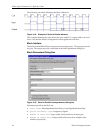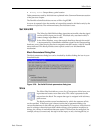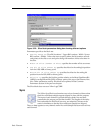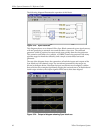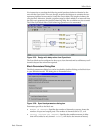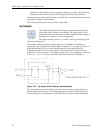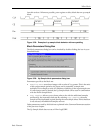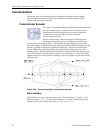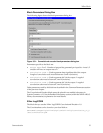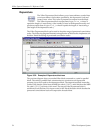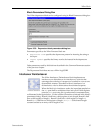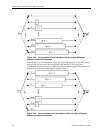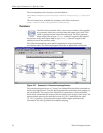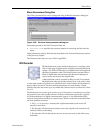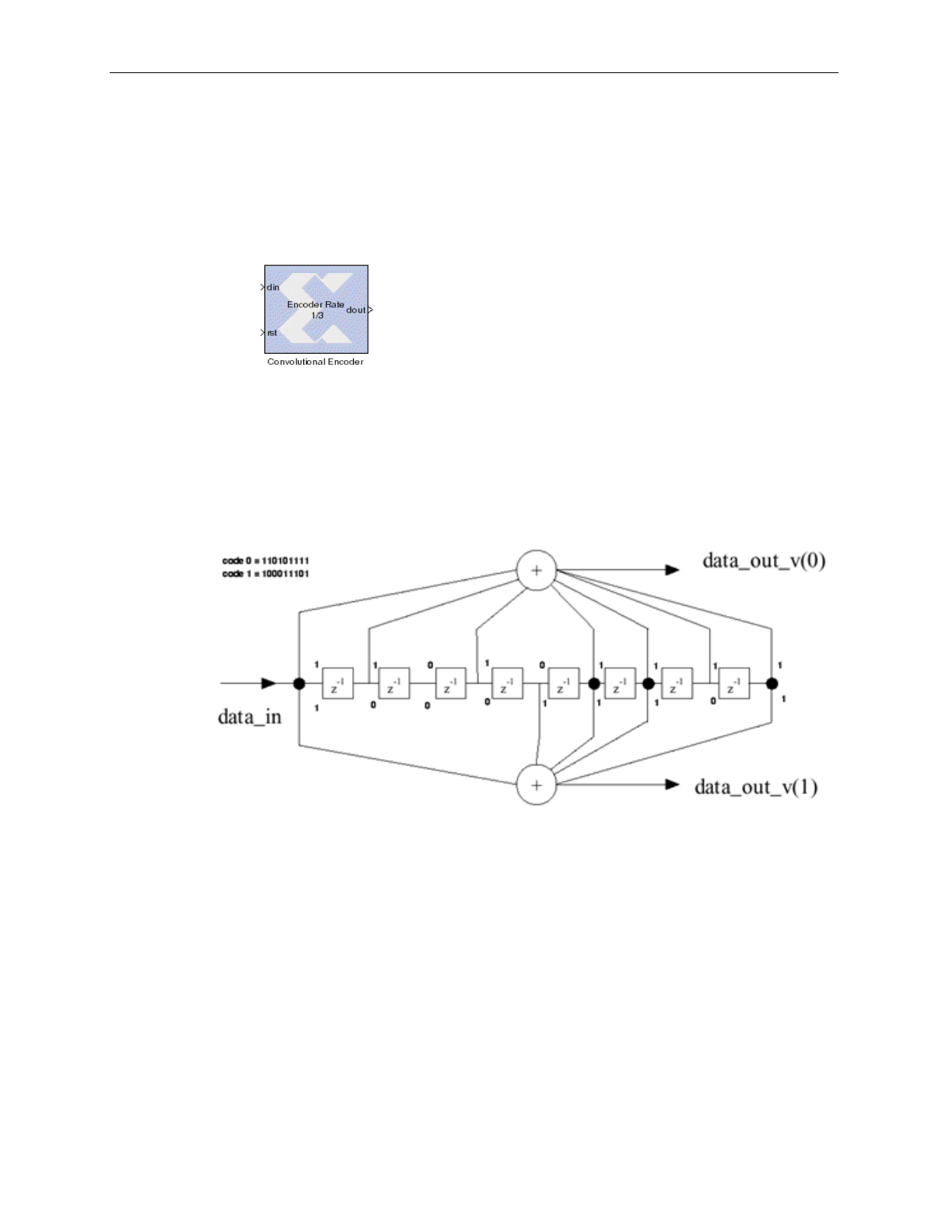
52 Xilinx Development System
Xilinx System Generator v2.1 Reference Guide
Communication
The blocks in the Communication library implement functions used in digital
communications systems, including convolutional and block channel coding,
interleaving, and utility functions.
Convolutional Encoder
The Xilinx Convolutional Encoder block implements an encoder
for convolutional codes. Commonly used in tandem with a
Viterbi decoder block, this block can be used to implement
forward error correction (FEC) circuitry for digital
communication systems.
Data is encoded using a linear feed forward shift register to
compute modulo-two sums over a sliding window of input
data, as shown in the figure below. The length of the shift register, and the code's
constraint length, is equal to the length of the convolution codes that characterize the
encoder, specified in the block’s parameters dialog box. These convolution codes
specify which bits in the data window contribute to the modulo-two sum at the
encoder output. Resetting the block will clear the contents of the shift register to all
zeros. The encoder rate is the ratio of input bits to output bits, so a rate 1/2 encoder
outputs two bits for each input bit. Similarly, a rate 1/3 encoder outputs three bits for
each input bit.
Figure 3-30: Constraint length 9 convolutional encoder
Block Interface
The block has two input and one output ports. The input ports, din and rst, are
limited to type UFix1_0. The size of the output port, dout, is determined by the
output rate. The port will be either type UFix2_0 or UFix3_0.



